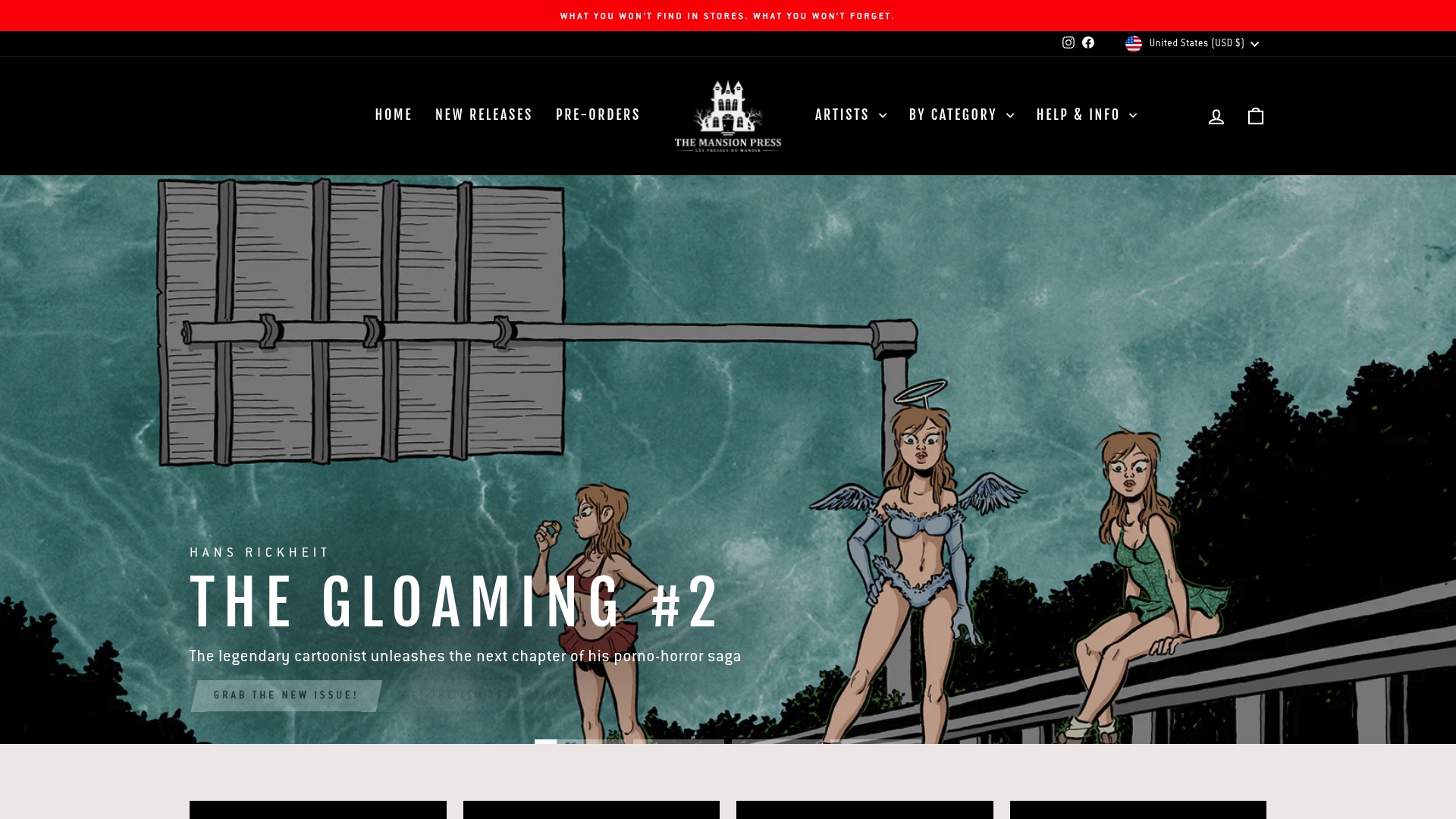Complete Guide to Controversial Comic Book Covers
Did you know that comic books once sparked a nationwide moral panic so intense it led to government hearings and bans? Nearly half of American parents in the 1950s believed comics were a threat to children’s morals. Controversial comic book covers have always tested the limits of art and society, blending bold expression with heated debate. These powerful images continue to shape culture, industry rules, and collector demand in ways few would expect.
Table of Contents
- Defining Controversial Comic Book Covers
- Iconic Examples And Historical Trends
- Censorship, Legal Issues, And Banned Covers
- Artistic Expression Versus Public Sensitivity
- Collector Value And Market Impact
Key Takeaways
| Point | Details |
|---|---|
| Controversial Covers Challenge Norms | These comic book covers provoke emotional responses and push the limits of acceptable visual storytelling, often reflecting societal tensions. |
| Historical Influence on Content | Changes in comic book censorship, particularly post-1954, have dramatically impacted narrative styles and themes in the industry. |
| Censorship and Legal Issues | The interplay between artistic expression and legal frameworks has shaped the boundaries of comic art, leading to debates regarding creative freedom. |
| Market Value and Collector Interest | Controversial covers can enhance collector value due to their rarity and cultural significance, reflecting ongoing societal dialogues. |
 |
|
Defining Controversial Comic Book Covers
Controversial comic book covers represent artistic expressions that challenge societal norms, often provoking emotional responses through provocative imagery, challenging themes, or graphic representations. According to Understanding Violent Comics and Controversy in Art, these covers frequently push boundaries of acceptable visual storytelling.
Historically, controversial comic book covers emerged from complex social dynamics. According to Fredric Wertham’s landmark 1954 book ‘Seduction of the Innocent’, certain comic covers depicting violence, sexual themes, and drug use were accused of potentially contributing to juvenile delinquency. This perspective dramatically influenced comic book publishing standards and sparked intense debates about artistic freedom versus social responsibility.
Key characteristics of controversial comic book covers typically include:
- Graphic depictions of violence
- Sexualized representations of characters
- Provocative political or social commentary
- Challenging traditional moral standards
- Representations that subvert mainstream expectations
The “good girl art” phenomenon exemplifies these controversial trends. Popular in the 1940s and 1950s, this style featured attractive women in provocative situations, challenging contemporary social expectations about female representation. For readers interested in exploring further controversial comic narratives, Banned Comics History Guide offers additional insights into the complex world of comic book censorship and artistic expression.
Iconic Examples and Historical Trends
The landscape of controversial comic book covers is rich with provocative examples that have challenged artistic boundaries and societal norms. According to Jim Steranko’s comprehensive ‘The Steranko History of Comics’, these covers often represented more than simple illustrations - they were powerful cultural statements that pushed the boundaries of visual storytelling.
Groundbreaking controversial covers emerged across different eras, each reflecting the social tensions of its time. A prime example is Howard Chaykin’s ‘Black Kiss’ series from the late 1980s, which faced significant legal challenges due to its explicitly graphic content. This series became a landmark in demonstrating how comic book art could challenge conventional moral standards and provoke intense public discourse. Understanding the Evolution of Graphic Novel Art provides deeper context into how such provocative works transformed the medium.
Key iconic controversial comic book covers throughout history include:
- EC Comics’ graphic horror covers in the 1950s
- Underground comix depicting explicit sexual and political themes
- Marvel’s boundary-pushing covers addressing social issues
- Independent publishers challenging mainstream narrative conventions
These controversial covers were not merely sensationalist; they represented critical artistic expressions challenging societal constraints. By depicting uncomfortable truths, challenging stereotypes, and confronting social taboos, these covers transformed comic books from simple entertainment to powerful mediums of cultural commentary and social critique.
Censorship, Legal Issues, and Banned Covers
The history of comic book covers is intrinsically linked to complex legal and censorship challenges that have profoundly shaped the medium. In 1954, the Comics Code Authority was established, imposing stringent guidelines that dramatically restricted creative expression and led to the widespread banning of numerous comic book covers deemed inappropriate or offensive.
Legal battles have been a defining characteristic of controversial comic book art. The Comic Book Legal Defense Fund has been instrumental in providing critical legal support for comic creators facing censorship and legal challenges related to controversial content. Understanding Underground Comic Creators offers deeper insights into how artists have navigated these challenging legal landscapes.
Key aspects of comic book censorship include:
Here’s a summary of the key aspects of comic book censorship:
| Censorship Aspect | Examples | Impact on Comics |
|---|---|---|
| Graphic Violence Restrictions | Banned horror covers EC Comics crackdown |
Reduced violent themes Publisher self-censorship |
| Sexual Content Limitations | Black Kiss legal issues Code guidelines |
Fewer adult stories Increased underground comics |
| Political Commentary Prohibition | Suppressed political satire Editorial mandates |
Less social critique Lost narrative depth |
| Social Critique Suppression | Underground comix censored Public backlash cases |
Artists seek alternative outlets Subtler storytelling |
| Artistic Moral Policing | ‘Good girl art’ targeted 1950s moral panic |
Standardized cover styles Decreased creative risk |
- Restrictions on graphic violence
- Limitations on sexual content
- Prohibition of political commentary
- Suppression of social critique
- Moral policing of artistic expression
These censorship efforts often reflected broader societal tensions, transforming comic books from potentially subversive art forms into heavily regulated media. Despite these constraints, many artists continued to challenge boundaries, using subtle narrative techniques and innovative visual storytelling to circumvent restrictive guidelines and maintain their creative integrity.

Artistic Expression Versus Public Sensitivity
The tension between artistic freedom and public sensitivities has long been a defining characteristic of comic book cover art. A striking example emerged in 2015 when a Rafael Albuquerque cover for Batgirl was withdrawn after significant public backlash, highlighting the delicate balance between creative vision and audience expectations.
The Comicsgate movement further illuminates these complex dynamics, critiquing the inclusion of diverse characters and creators in comics and sparking intense debates about representation and artistic boundaries. Understanding Experimental Illustration Techniques provides context for how artists navigate these challenging creative landscapes.
Key dimensions of this ongoing artistic debate include:
- Negotiating boundaries of acceptable visual representation
- Balancing creative freedom with social responsibility
- Challenging versus reinforcing existing cultural narratives
- Responding to audience sensitivities without compromising artistic integrity
- Exploring the evolving relationship between art and social norms
Ultimately, controversial comic book covers serve as powerful cultural artifacts that reflect broader societal tensions. They challenge viewers to confront uncomfortable truths, provoke critical dialogue, and push the boundaries of visual storytelling beyond comfortable, predetermined limits.
Collector Value and Market Impact
Controversial comic book covers have become fascinating economic artifacts, with their market value often directly tied to their provocative nature. A prime example is Black Kiss, a controversial series that, despite initial shock value, has been reprinted multiple times, demonstrating the sustained collector interest in boundary-pushing comic art.
The economic landscape of comic book collecting underwent significant transformations following the Comics Code Authority’s establishment. Publishers who defied restrictive guidelines often saw increased collector demand, creating an intriguing market dynamic where controversy became a potential value driver. Understanding Collecting Rare Comics provides deeper insights into how these market mechanisms operate.
Key factors influencing the collector value of controversial comic book covers include:
- Rarity and limited print runs
- Historical significance of the artwork
- Cultural impact and social commentary
- Artist reputation and significance
- Condition of the original publication
Collectors are not merely purchasing an image, but acquiring a piece of cultural history. Controversial covers represent more than graphic art - they are tangible documents of societal tensions, artistic rebellion, and creative expression that transcend their original medium.
Discover and Own the Boldest Moments in Comic Book Art
The challenge of balancing artistic freedom with public sensitivity makes controversial comic book covers some of the most powerful and emotional pieces in the art world. If you are passionate about exploring these boundary-pushing works that tell complex cultural stories and challenge social norms, you are not alone. The struggle for creative expression highlighted in the article calls for a place where collectors and fans can connect with unique works that speak truth to power.

Experience this vibrant artistic rebellion firsthand by browsing our curated selection of limited-edition comics, collector’s items, and original artworks at The Mansion Press. Explore exclusive releases that reflect the history and impact of controversial comic art. Dont wait to enrich your collection with pieces that captivate, provoke, and celebrate freedom of expression. Start your journey today by visiting The Mansion Press and discovering how you can own a part of comic book history.
Frequently Asked Questions
What defines a controversial comic book cover?
Controversial comic book covers are artistic expressions that challenge societal norms through provocative imagery, graphic representations, and challenging themes, often provoking emotional responses from viewers.
What historical events influenced the rise of controversial comic book covers?
The rise of controversial comic book covers was influenced by social dynamics and debates about artistic freedom versus social responsibility, particularly after Fredric Wertham’s ‘Seduction of the Innocent’ in 1954 criticized comic content for potentially encouraging juvenile delinquency.
How has censorship affected the depiction of controversial themes in comic book covers?
Censorship, particularly established by the Comics Code Authority in 1954, imposed guidelines that restricted graphic violence, sexual content, and political commentary, which limited creative expression in the comic book industry for several decades.
Why do collectors value controversial comic book covers?
Collectors value controversial comic book covers due to their rarity, historical significance, cultural impact, and the reputation of the artists, as they represent intriguing pieces of cultural history and artistic rebellion that transcend mere graphics.

